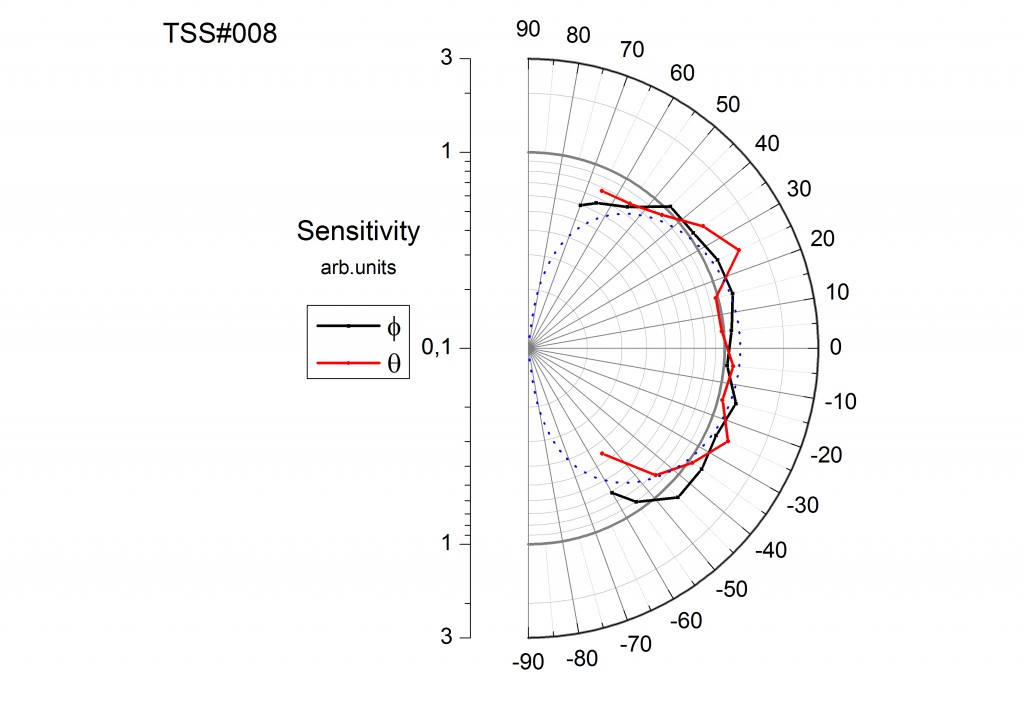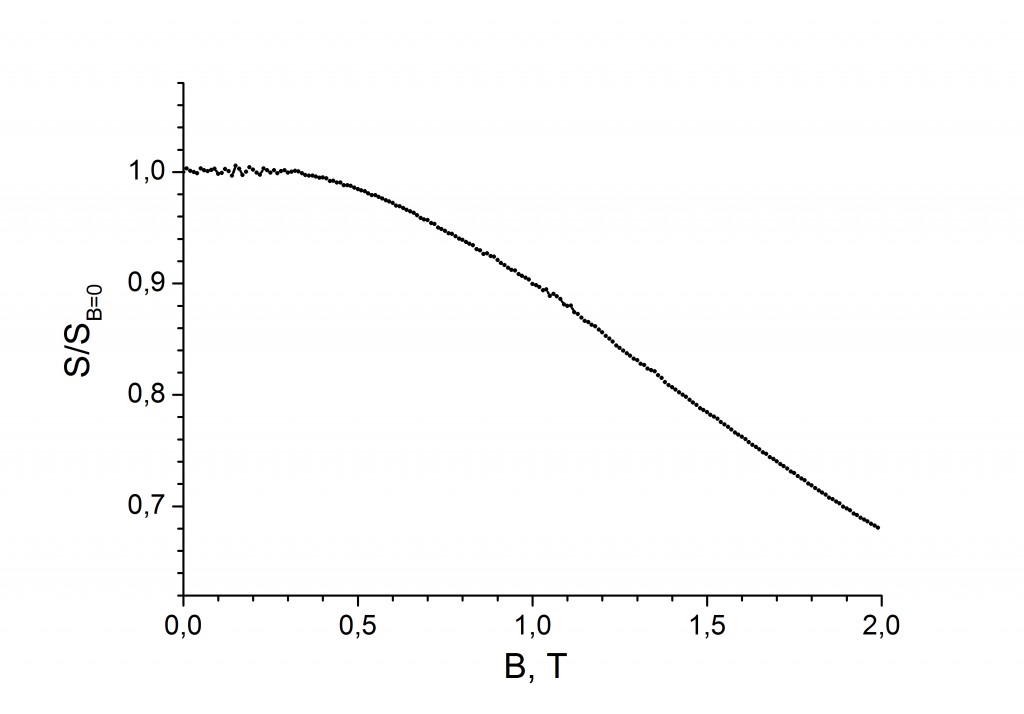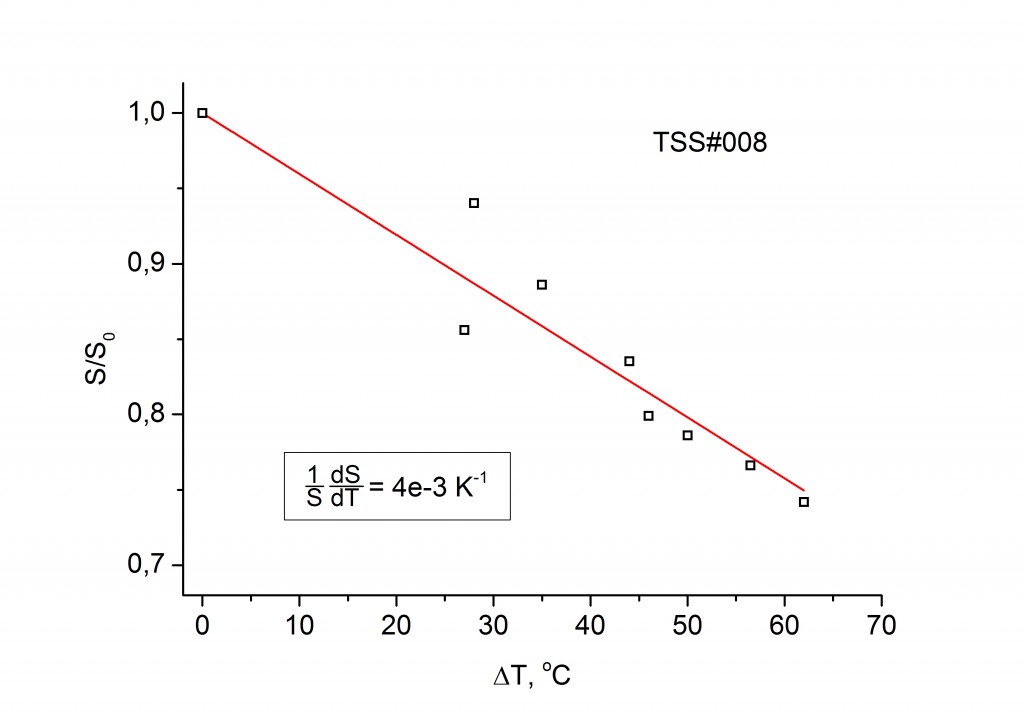Setting new records for our Ultrafast Sub-Terahertz Detectors: testing updates on magnetic field dependence & temperature dependence and some more…
Quite recently we announced about excellent response time (< 150 ps) that Terasense Ultrafast sub-Terahertz detectors had demonstrated. Of course, that was not the only achievement that we would like share with the THz-related scientific and industrial stakeholders around the globe. For our advanced distributors and our web-site guests keenly interested in this area, we saved couple more important updates shaping their expectations:
1) First, as our Fig.1 (Angular dependence) below shows, the sensitivity of our Ultrafast sub-Terahertz detector shows virtually no dependence on the angle of the inbound THz radiation beam(s). In other words, sensitivity is affected only as an angle cos^2, i.e. proportionately to the visible area.
Fig.1 - Angular dependence2) Second good news is about the actual (rather low) impact that can be potentially caused upon our devices by magnetic field. Sensitivity of the detector shown in Fig. 2 (Field dependence) reveals little to no dependence on perpendicular magnetic field. Our ultrafast detector’s sensitivity falls only by 11% in 1T plane at room temperature.
Fig. 2 - Field dependence
3) Third, our devices proved to be rather insensitive to mild alterations in temperature. As is evident from Fig. 3 (Temperature dependence) the actual testing showed only very slight reduction in sensitivity as the temperature raises (aprx 0.4%/degree Co).
Fig. 3 - Temperature dependence
4) Now, some more updates on compatibility of our Ultrafast sub-THz detector with vacuum. It is rather cumbersome for us to singlehandedly arrange and support such fundamental R&D activities. Presently our detectors are manufactured using a chip board made of FR-4 glass textolite and EPO-TEK 353ND Black epoxy resin. The epoxy resin is said by the manufacturer to have successfully passed “NASA low outgassing standard E595" (http://www.epotek.com/site/administrator/components/com_products/assets/files/Style_Uploads/353ND.pdf). Although we cannot make the same statement about chip board, we can definitely substitute glass textolite (glass-fiber plastic) with a different material identified as Rogers RO4003C, which is capable of meeting the same standard requirement according to respective data posted by manufacture (http://www.rogerscorp.com/documents/752/acm/Low-Outgassing-Characteristics.pdf).
At the same time, please be advised of the ongoing R&D activities in our labs with a goal to get an Ultrafast sub-THz detector with sensitivity entirely unaffected by polarization.
Finally, our Ultrafast sub-THz detector are known to generate pretty tangible thermo-emf (~mV/К), which is critical and should be taken into consideration, when employing our devices in conditions, where temperature is subject to change.
Stay with us, which means staying tuned to the latest and greatest in THz research and development!


